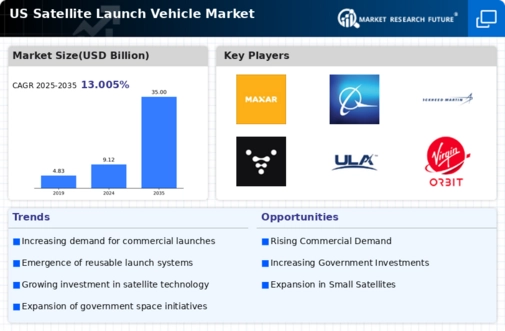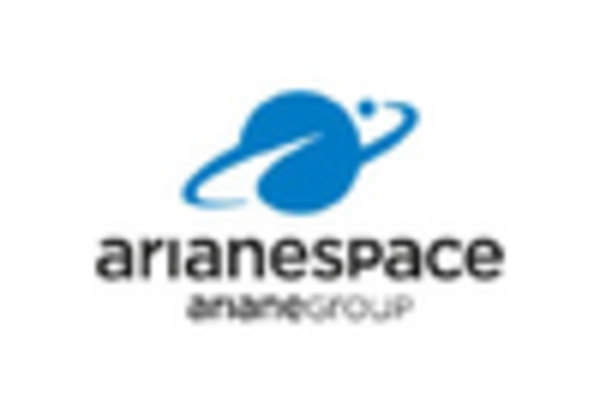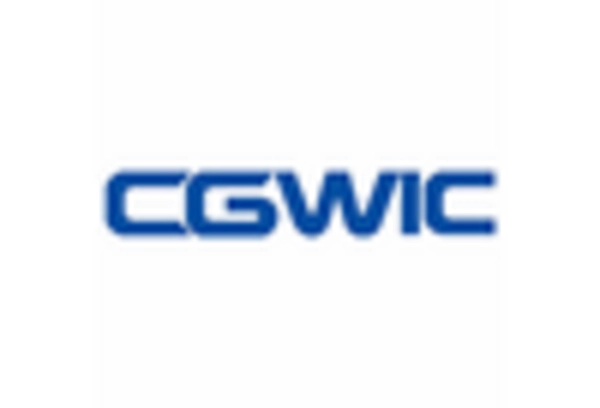Emergence of New Market Players
The satellite launch-vehicle market is witnessing the entry of new players, which is reshaping the competitive landscape. Startups and established companies alike are developing innovative launch solutions, often focusing on cost-effective and rapid deployment capabilities. This influx of new entrants is likely to increase competition, driving down launch costs and improving service offerings. As of 2025, the number of active launch providers in the US has increased by over 40% compared to previous years, indicating a vibrant and evolving market. This trend suggests that the satellite launch-vehicle market is becoming more accessible, potentially leading to a broader range of satellite missions and applications.
Government Initiatives and Funding
Government support is a significant driver of the satellite launch-vehicle market, particularly in the US. Initiatives such as the National Aeronautics and Space Administration (NASA) and the Department of Defense (DoD) are actively investing in space exploration and satellite deployment. In 2025, federal funding for space-related projects is estimated to exceed $25 billion, which is likely to bolster the capabilities of domestic launch providers. This financial backing not only enhances technological development but also encourages public-private partnerships, thereby expanding the market landscape. The commitment of government agencies to maintain a competitive edge in space exploration further underscores the importance of these initiatives in propelling the satellite launch-vehicle market.
Growing International Collaboration
International collaboration is emerging as a key driver in the satellite launch-vehicle market. Partnerships between US companies and foreign entities are becoming increasingly common, facilitating knowledge exchange and resource sharing. Such collaborations can enhance technological capabilities and expand market reach. For instance, joint ventures in satellite development and launch services are likely to streamline operations and reduce costs. As countries recognize the strategic importance of space, these partnerships may lead to more coordinated efforts in satellite deployment, thereby benefiting the satellite launch-vehicle market. The potential for shared missions and collaborative projects suggests a future where international cooperation plays a crucial role in advancing space exploration.
Increased Demand for Satellite Services
The satellite launch-vehicle market is experiencing heightened demand driven by the growing need for satellite services across various sectors, including telecommunications, Earth observation, and scientific research. As of 2025, the market for satellite services in the US is projected to reach approximately $100 billion, indicating a robust growth trajectory. This surge in demand necessitates more frequent launches, thereby propelling the satellite launch-vehicle market forward. The proliferation of Internet of Things (IoT) devices and the expansion of 5G networks further amplify the need for satellite connectivity, which in turn stimulates the launch-vehicle sector. Consequently, companies are investing in innovative launch solutions to meet this increasing demand, suggesting a dynamic interplay between satellite services and launch capabilities.
Technological Innovations in Launch Systems
Technological advancements are playing a pivotal role in shaping the satellite launch-vehicle market. Innovations such as improved propulsion systems, enhanced payload capacities, and advanced tracking technologies are enabling more efficient and reliable launches. For instance, the development of hybrid propulsion systems is expected to reduce launch costs by up to 30%, making space access more economically viable. Furthermore, the integration of artificial intelligence in launch operations is enhancing precision and safety, which is crucial for the successful deployment of satellites. As these technologies continue to evolve, they are likely to attract new players into the satellite launch-vehicle market, fostering competition and driving further advancements.

















Leave a Comment